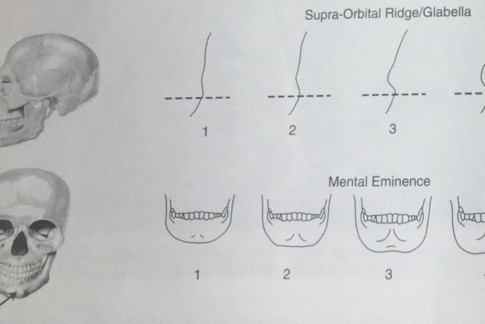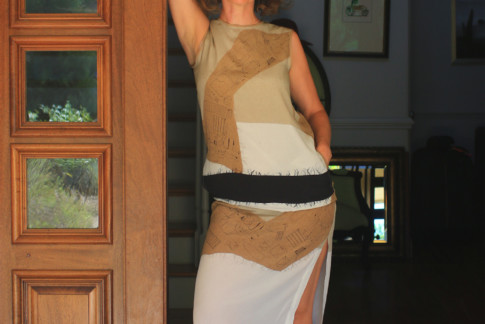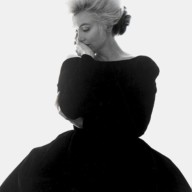

Aug. 31, 2015
1821
The godet imposter
Getting closure on a skirt that did not fit a wardrobe, a mien, or a lifestyle
Feb. 27, 2017

An intensely anthropological take on fashion, style, and gender bending trends
Even those who have been sleeping under a rock must be fully aware of just how much gender bending rules the today’s fashion game. However, even the most fashion savvy among us might be caught by surprise when they realize that how far you’re able to go with the gender bending game isn’t defined by your style IQ, but by your DNA. This idea is at the heart of my auteur Amazon-Siren beauty concept, which I developed in hopes of helping women master the art of their personal style and navigate the intricate and highly chaotic world of modern fashion. After I spontaneously introduced my Amazon-Siren beauty concept to my Russian blog readers in 2010, I was swept off my feet by the overwhelming response. It was more of a late night rambling than a thoughtful write-up for me, but I felt like I accidentally stepped on an ant hill. Women related to it right away. Oh, the feeling that you have plucked the string! At the time I had no idea that I opened a Pandora’s box of gender, class, and political issues. But I did. And there is no going back.
The fact that beauty standards have changed is a truism. But it never hurts to revisit things. A glance at Botticelli’s Primavera (1482) can provide quick insight. The gladiator sandals and tunics which serve as a blueprint for modern fashion call for Roman legionnaire legs. And legionnaire legs are a product of a strong, combative torso. Make no mistake; the most important part of a woman’s sex appeal today is a pair of masculine legs.
A Zenon worthy paradox, isn’t it? I am going to take an anthropological approach in dissecting it and it will get chilling at times, so if you want to spare yourself the nasty details, just scroll to the end of the entry where I give some practical advice.
With the “Marathoner gams and Fouetté thighs” entry I put legs in the spotlight, separating them into two broad categories and explaining how they dictate our style choices. A marathoner gam is a typical feature of an Amazon beauty while a ballerina thigh is often a Siren’s prerogative. Having said that, each body part can only be fully understood in the context of the entire physique. Here in this long piece, I am moving upward on a woman’s body and hope to provide that very context.
The svelte appeal of a lot of marathoner’s gams is owed to a heavier upper body. A strong midsection, well developed shoulders, and a wide chest create legs favoring proportion. Conversely, the fouetté thigh effect is often caused by fragile, gently sloped shoulders, a long neck, and a swayed back. The elongated, swan-like lines of the upper body force the thighs to take the role of the heaviest body part. The femur, the long bone that connects the pelvic bone and the knee cap, is, after all, the largest bone in the human skeleton.
For centuries legs played a modest role in women’s beauty. It was all up to long necks, gently sloped shoulders, tiny waists, and gently curved backs. Everything had to be fragile and soft. Why? Well, in terms of evolutional biology, it meant such a woman had fine bones. The perks of fine bones are not just looking good in an oil-on-canvas portrait. They had a pretty mundane quality to them too: fine bones open up easily during childbirth and quickly return, manifesting readiness for the next pregnancy. Strong boned women were known to have longer and more painful childbirths. Putting it in the medical context of a few centuries ago: to be considered attractive, women needed to be reproduction-ready. Legs, the explorative and combative, traditionally masculine feature, were no help. No wonder they did not mean much. Necks and waists did, as they communicated fragility and relative immobility. Legs and the robust chest that came with them were a male prerogative. Form followed function and the optimal reproduction setup instilled beauty standards. But things have changed quite a bit. In the last half a century even gynecologists have warmed up to bonier physiques as advancements in medical technology fill in for a natural predisposition for uneventful pregnancy and childbirth. The only people I can think of who can genuinely get excited about fine boned beauties today are holistic birth center practitioners. Fine boned women give natural birth beautifully, confirming doulas’ magical powers.
Legs’ zeitgeist evolved along with the emancipation process. As women gained more power and independence, hems raised and swooning textures gave way to stiff, origami looking fabrics. The shift towards a boxier silhouette naturally called for an androgynous body. Or did androgynous women alter fashion so it better served their bodies? However initiated, this was the path marathoner’s gams took to the spotlight.
In my native Russian we coin those endless runway-ready limbs with the expression “legs running from the ears.” In terms of human anatomy, this is not that much of an exaggeration. The legs-favoring proportion of a heavier upper body is dictated by particular skeletal features, namely, the mastoid process: a conical prominence of the temporal bone behind the ear, where neck muscles attach. A larger mastoid process is likely to produce robust, strong torso bones and muscles and may be followed by a high-hip morphology: a female skeletal setup with the widest part of the hip located above the crotch. Such a torso will host all the extra pounds keeping thighs svelte even for the most gastronomically unleashed lifestyles. This makes the legs look endless but it also often steals precious inches from the neck.
This little knoll is much more pronounced in males than in females. In forensic anthropology (ok, it gets gross, I am sorry) the mastoid process is one of the sure ways to identify the sex of a skeleton.
Now why would such chilling data make its way into a style blog? Well, because beauty is not skin deep and our bone structure defines our style. And believe it or not, our bones speak louder when wrapped in clothes than when exposed in a bikini. The dreadful measurements from forensic reports translate into what a person’s portrait area looks like: the first thing we see when we form our impression. Along with the face, our neck and shoulders define our presence and communicate our message to the world in the most unequivocal way. These are important lines that dictate what cuts, tailoring, fabric, and prints will do us justice. This is what defines our style and decides how far we will get in the oh-so-fashionable fashion gender-bending game.
Another bone that an anthropologist would typically use along with the mastoid process to identify the sex of the deceased is the scapula. A scapula 17 cm and larger indicates a male; 14 cm and less, a female. Measurements falling in between these two are in a grey area that requires more sophisticated forensic methods and gives their owners cart blanche in the gender bending game. (data and pictures from Introduction to Forensic Anthropology by Steven Byers). In terms of style this hidden data is important because it affects what kind of scye tailoring and neckline our dresses and tops need to make us look good. Along with the mastoid process, scapula affects our portrait area. No stylist or designer will ever bother himself with scapula measurements. A pattern maker might be interested, but the data is too hard to obtain. I like to use an anthropological approach despite its pure scholastic nature because it helps make things very visual and undeniably logical at the same time. It makes for a new take on body type information that has existed since biblical times, was misused and overused in millions of ways, and stopped making sense to women.
The 10-12 cm scapula and non-projecting mastoid process are both strong sexual dimorphic features hidden from the eye. But they result in a set of other dimorphic features that do meet the eye: a long, vulnerable neck; gentle clavicle (clavicle and scapula are technically one bone); soft shoulders; and a generous, leg-length stealing torso with a pronounced back sway, the longest of all soft and gentle lines of the female body. It flows divinely, like Tosca’s “Vissi D’arte,” all the way to the thigh where it quietly dissolves. Evolution equipped the female back with a curve that carries the unique feminine message- “childbearing-” and serves as a precursor to the pregnant female body. As pregnancy progresses, the waist is the first to give in; it’s the back curve that becomes more pronounced. Hips and thighs bear a sacral meaning of unique female stamina closely associated with pregnancy and birth. They ask to stay in the shadows due to all the blood, pain, and secrecy that come with it. This evolutionary imposed setup produces a low-hip morphology with the widest part of the hip resting below the crotch area and childbearing hips stealing from the leg-length, thus imposing immobility and stability.
This body morphology naturally projects the protect-me sexy message: the traditional feminine agenda. This is the base of a Siren’s femininity and partly a product of a small, fragile scapula, small mastoid process, and about a dozen other features on our skeletons that make sense only to an anthropologist, but serve as a precursor to what meets the eye. Good luck trying the gender-bending scenario with some of those. As scapula length passes the 14 mm mark and rises and the mastoid process protrudes more, we start seeing a stronger neck, wider shoulders, and a more compact torso. Such anatomy is natural at issuing the combative-sexy message, a post-industrial addition to female virtues and a prerequisite for an Amazon femininity which shines in an androgynous, gender bending scenario.
In the following graph from the forensic anthropology textbook you can see the range of skeletal variety that illustrates gradual transition in the human bone structure from In to Yan dominance. It starts with a small mastoid process that can only be found on a female skull (1). Then slightly increased rugosity of (2), (3), and (4) start posing a question for anthropologists trying to sex the skull. The last two positions, (4) and (5), with a highly protruding shape provide more certainty on the male gender.
The takeaway here is that sexually dimorphic qualities do not fit two boxes; it is a continuum. And so is my Amazon-Siren beauty concept. But in its pure “text-book” form, an Amazon’s beauty is based on unpronounced, sexually dimorphic qualities as opposed to a Siren’s distinct ones. This explains why Sirens are under-represented in modern fashion that is infatuated with all things gender-bending. There are a handful of stars and half that number of designers who work to accommodate the Siren’s morphology and even their images are heavily adjusted, angled, and photoshopped to approximate an Amazon’s combative, invincible, leggy profile. Most models we see today look like proud owners of larger scapulas and mastoid processes falling in the “indeterminable” category. The more elite the fashion publication or brand, the more “indeterminable” and even “probable male” female mastoids and scapulas get. Do I need to tell you about scores of weeping clients, likely candidates for sexually dimorphic <14cm scapulas, who cannot figure out for the life of them just why they do not look good in all those boyfriend sweaters and other gender-bending styles despite dieting, exercising, and conscious shopping? The only consolation I have to offer them right now is that if an anthropologist ever finds their remains, such a specialist will be able to identify their gender on the spot without any special forensic knowledge. Adorable, isn’t it?
The natural question is why not settle at separating all beauties into androgynous/tomboy/gamine and traditional/curvy/glamorous types, which is what we mostly see in the fashion press? I have found reality to be a little more simple and complex at the same time. Here, take a look.
It would be somewhat fair to say that the best legs come with a masculine torso and an undefined waist, but to make matters really complicated, the strong torsoed gal may sport a fierce waist line in her bikini. On the contrary, a gentle torso may not look nearly as impressive on the beach. Here is an illustration of the idea with Ursula Andress and Halle Berry both starring as Bond girls.
Ursula’s waist looks fiercely defined, but it may disappear in some traditional feminine tailoring due to her strong scapula that makes her torso more compact and her neck look shorter. Her combative-sexy beauty calls for a more rugged, dressed-down, unassuming style.
Halle’s waistline does not look nearly as dramatic, but it will become more prominent in a maillot and tailored clothes due to a longer neck and her elongated, fragile upper body. Her protect me-sexy beauty will require all the traditional female dress tailoring techniques and finishes such as artful necklines, strategically placed darts, piping, tapering, and trims.
These two women, so strikingly different, but depicting the same heroine is priceless. I know they may not look very strikingly different to you right now, but through an anthropologist’s eye they are. Ursula, with her strong torso that steals from her neck but contributes to her marathoner’s gams, is decidedly Amazon. Hers is a high-hip morphology and she naturally sends a combative-sexy message. Halle, with her long, swan-like, fragile neck and an elongated torso that forces a low-hip morphology and a fouetté thigh, showcases a Siren body type. Her physique naturally issues a protect me-sexy message. Both an Amazon and a Siren can take on an array of roles, such as Bond girl, mom, strategist, caretaker, leader, or follower. We can envelope a lot of different messages, including but not limited to protect me-sexy and combative-sexy. Some will come more naturally; others will require a degree of adaptation.
An Amazon is a type of post-industrial beauty whose sexual dimorphic qualities do not read as clearly as traditional beauty standards would like. A Siren, on the contrary, is a woman whose sexual dimorphic qualities jump out at us, as if screaming “I am reproduction ready!”
A long neck and an elongated torso with a pronounced sway in the back are much better “reproduction ready” messengers than waist and bosom which are traditionally perceived as the anchors of feminine fecundity. It is not about the waist. Neither it is about the bosom. Both, a squarish torso and a fiercely defined waist can indicate an Amazon beauty type. Both, a 38A and a 38D bra size may signal an Amazon born to shine in gender bending styles. On the other side of the spectrum, both a well pronounced, or a subtly contoured waist can indicate a Siren. Both, a 32A and a 32D bra size may signal a Siren, forced into a decidedly feminine aesthetic. The deciding and most outspoken factors here are torso length and width, parameters dictated by our scapula, mastoid process, and a number of other bumps and dents on our bones that anthropologists treat as sexually dimorphic qualities.
As a result of those, Amazons tend to have stronger necks that can totally betray them and appear short and stumpy once they are nicely clothed. Well-pronounced Amazon features make the lady gravitate towards loosely cut necklines and scyes, celebrate the white shirt, thrive on all things sleeveless, and always have a somewhat undone, undressed feel to her outfit. Such a neck often comes with the gift of marathoner’s gams: a svelte, runway worthy thigh and firm buttocks. An Amazon beauty naturally issues her combative-sexy message before she speaks, walks, or acts. Her looks naturally fit the highly favored visual agenda. Gender bending comes naturally for her and does her enviable justice.
A Siren can be recognized by her long, swan-like neck that thrives in the most rigid bateaus, high necks, chokers, Victorian style collars, and embellished shoulders. This type of beauty requires at least one prim and proper or elevated enough item for all her casual looks. In most cases such a neck continues in an elongated torso with a very pronounced back curve. The price for this generous line is a fouetté thigh. Well-pronounced Siren features naturally project a protect me-sexy message before their bearer has a chance to speak, walk, or act. None of these qualities fit into the current socio-cultural doctrine. Gender bending goes against a Siren’s DNA. Experimenting with gender bending styles for a Siren is usually laborious and expensive. A lady with well-pronounced Siren qualities finds it very challenging to fit into the modern, progressive aesthetic landscape.
Many women will find that their physique represents both Amazon and Siren qualities in various proportions. Some will have both an elongated child-bearing torso and a pair of long, mighty legs. Others will get very close to an actual masculine anatomy: strong, protective torso and long, exploration-ready legs. Yet others will find that making their style statement is like running between the Scylla and Charybdis of their strong necks and fouetté thighs. Figuring oneself out mostly reminds us of the array of tasks and challenges that the aforementioned anthropologists face. Therefore it helps to have anchors and remember that, like sexual dimorphism, Siren and Amazon beauty types are not two boxes, but rather two archetypical extremes. There is an exciting continuum in between, a spectrum hosting the variety of all imaginable human combinations. Whatever information I made available with my Legs and Amazon-Siren Intro entry is nowhere near enough to help you understand how to find your unique place on this continuum, but I have more information to help you coming soon.


Aug. 31, 2015
1821
Getting closure on a skirt that did not fit a wardrobe, a mien, or a lifestyle
This site uses Akismet to reduce spam. Learn how your comment data is processed.















I’ve already measured my and my husband’s scapulae.
Your comment made me laugh, same story here! “Honey, could you please measure my scapula?” – “Measure your WHAT?..”